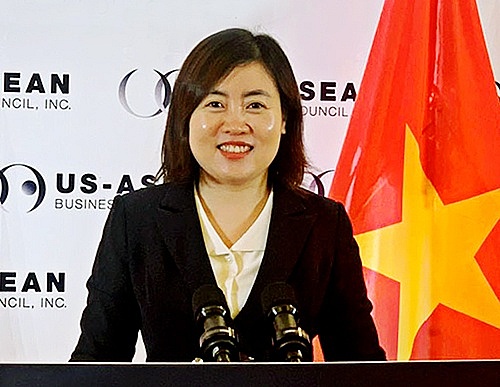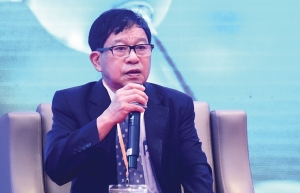Legal tweaks could unlock potential
How can innovation help Vietnam’s pharma and healthcare sector overcome challenges, and drive future sustainable development?
 |
| Bui Thi Viet Lam, Vietnam country representative of the US-ASEAN Business Council |
As shown by KMPG’s recent report, the Vietnamese pharmaceutical market is currently expanding quickly, rising from $5.4 billion in 2018 to an estimated $6.5 billion in 2021, with a compound annual growth rate of 6.5 per cent.
Within the total pharmaceutical industry, the innovative pharmaceutical is estimated to contribute $1.16 billion to total GDP in 2021 and likely grow at more than 10 per cent per annum going forward. These factors, combined with rising personal income, make Vietnam an attractive destination for global pharmaceutical companies looking to capitalise on emerging market growth.
However, as a share of the pharmaceutical product segments, Vietnam has one of the lowest percentages of originators across Asian markets at less than 4 per cent (compared to Thailand at 8 per cent and Singapore at 14 per cent).
According to the Pharma Group, it takes about eight years on average for a Vietnamese patient to access a new drug/vaccine after it is introduced to the global market.
As an emerging market, Vietnam has a unique opportunity to build a sustainable local pharmaceutical industry through the support of global pharmaceutical companies, which are also active members of the US-ASEAN Business Council.
With rigorous experience in innovative pharmaceuticals, we are willing to work closely with Vietnam’s policymakers and other stakeholders to facilitate the development of Vietnam’s pharmaceutical industry as a potential key sector in the future growth of the economy and wellbeing of its citizens.
How important is Resolution No.29-NQ/TW to the future development of the sector and what are your member companies’ expectations of it?
It plays as a major milestone in the roadmap towards a robust pharmaceutical industry, and has been prioritising the pharmaceutical industry in national development with a focus on joint-ventures and partnerships in training and technology transfer.
Lessons learned from other countries such as Singapore, South Korea, and Ireland, which successfully developed their domestic pharmaceutical industry based on the attraction of foreign investment, have shown that a clear and long-term national vision is foundational to convince foreign investors to consider expanding their operations.
Certainly, the most important factor is a clear, detailed action plan to realise such visionary ambition. We look forward to seeing a consistent legal and regulatory framework. The legal and regulatory framework needs to be more predictable to facilitate corporate decision-making that will unlock Vietnam’s future potential.
We hope the government will continue consultation with the business community during the process of drafting key laws and regulations for the sector’s development, including the revised pharma law and revised Law on Health Insurance to ensure a predictable and consistent business climate.
What is moreover, more competitive incentives should be introduced to drive investment into the pharmaceutical industry. For instance, greater efficiency around the registration approval process for new innovative products that address unmet medical needs will draw more foreign investment into the sector.
The government can also consider providing incentives in the form of tax deductions or reimbursements for pharmaceutical companies. For example, Singapore provides incentives to pharmaceutical companies when they set up operations there, invest in research and development activities, or conduct research and clinical trials locally.
This significantly reduces companies’ operation and capital expenditures and hence encourages foreign investments into the industry. Vietnam could learn from this to boost foreign investment into the industry.
What are the investment trends among your member companies in Vietnam?
In recent years, our member companies have been setting up local drug manufacturing capabilities or partnering with local manufacturers, which helps drive technology transfer, process research, and development and capability enhancement of domestic manufacturers. International standards and best practices will also come through such partnerships, driving the domestic pharmaceutical industry to faster growth.
Our member companies trust in the future of Vietnam and its promising growth, and we would like to expand our operations here and are committed to the sustainable development of Vietnam’s pharmaceutical industry.
However, ambiguous policies and lack of stability in terms of regulatory framework, particularly regarding innovative pharma, are impediments for us when considering the establishment or expansion of a local manufacturing presence.
 | Vietnam's pharma sector shows potential Prof. Nguyen Hai Nam, rector of the Hanoi University of Pharmacy, recently asserted the potential strength of human resources in Vietnam's pharmaceutical sector, suggesting it could be the underpinning element for attracting global investment. |
 | Opportunities abound for innovative pharma industry Countries around the world are hoping to entice investment for their innovative pharmaceutical industries in order to bring socioeconomic benefits towards sustainable development strategies. Emin Turan, chairman of Pharma Group, talked to VIR’s Bich Thuy about the specific opportunities for Vietnam in this regard. |
 | More effort needed to increase pharma readiness Amid existing challenges and new investment approaches towards innovation and science and technology, the pharma-healthcare sector is working to tap into these trends, while developing and enhancing regulations. |
 | Pharma innovation can come from global experience Innovation has become an inevitable trend in the pharma-healthcare sector, which requires new approaches to tap into its potential and encourage stakeholders to join in. Trinh Van Lau, chairman of the Vietnam Pharmaceutical Companies Association, talked to VIR’s Tung Anh about the factors in need to achieve its long-term vision. |
What the stars mean:
★ Poor ★ ★ Promising ★★★ Good ★★★★ Very good ★★★★★ Exceptional
Themes: Healthcare Platform
- Takeda Vietnam awarded for ongoing support of Vietnam’s sustainability efforts
- Self-care signals shift towards sustainable healthcare
- DKSH to acquire Vietnamese healthcare distributor Biomedic
- Two national hospitals expand capacity with new facilities
- Vietnam moves to enhance disease prevention, equity, and sustainability
Related Contents
Latest News
More News
- Main drivers for Vietnam’s digital economy future (December 03, 2025 | 11:35)
- Pivotal stage of growth paves way for rise in M&As (December 03, 2025 | 10:00)
- Positive projections for M&A interest from Thailand (December 03, 2025 | 09:40)
- Manifesting the first line of defence in cybersecurity (December 03, 2025 | 09:00)
- The transformational role AI can play in accounting arena (December 03, 2025 | 08:00)
- Unlocking 5G-AI potential in Singapore (December 03, 2025 | 08:00)
- Data-driven strategies vital for a fast-evolving nation (December 02, 2025 | 09:41)
- Policy to practice: how Vietnam can lead the region (November 26, 2025 | 16:03)
- Mobilising private capital at scale vital for climate battle (November 26, 2025 | 15:36)
- VILAF and Yoon & Yang launch Vietnam - Korea Practice Unit (November 26, 2025 | 15:16)

 Tag:
Tag:




















 Mobile Version
Mobile Version